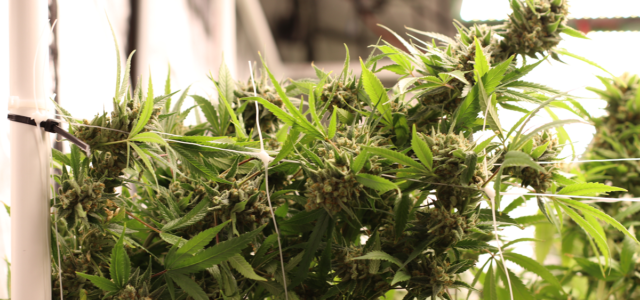Surprise: Seniors are becoming the fastest-growing medical cannabis users demographic
Featured News November 22, 2018 toby 0

Is history repeating itself? A generation of counterculture-era youngsters adopted “Turn on, tune out, drop out” as their mantra following Timothy Leary’s San Francisco proclamation in 1966. For the average 17-year-old, the lure of marijuana and other mind-altering substances offered opportunities to ditch their inhibitions and ignore convention.
Today, the same cohort is collecting Social Security checks and turning to Medicare for their health needs. But preferences for treatments that mediate senior ills have expanded. These days, marijuana is being prescribed as a safer, less expensive alternative to traditional pharmaceutical solutions and seniors are willing to try it.
“The trend among seniors using medical marijuana is on the up-and-up. From 2006 to 2013, cannabis use among seniors increased by 250-percent,” notes a Society for the Study of Addiction research report (https://onlinelibrary.wiley.com/doi/full/10.1111/add.13670).
Change is moving at warp speed
According to the National Council for Aging Care (Aging.com), the perpetual battle to legalize cannabis in myriad forms has been a formidable one. From the Marijuana Tax Act of 1937 to the Nixon-initiated Controlled Substances Act, the tide flowed in a single direction until the 1990s.
“The Washington Post” reports that by 2013, 4 of 5 doctors approved of medical marijuana (https://www.cbsnews.com/news/survey-76-percent-of-doctors-approve-of-medical-marijuana-use/) and the largest group of beneficiaries are senior citizens.
According to HealthDay News, “Seniors are giving rave reviews for medical marijuana.” Users call it an ideal treatment for chronic pain associated with aging and a healthier alternative to opioids. A leading authority on palliative care for seniors, Dr. Diana Martins-Welch declared the impact of medical marijuana “overwhelmingly positive.”
Why are industry insiders so surprised?
The long-standing issue of “illegality” notwithstanding, members of the medical profession in association with the pharmaceutical industry have been mired in controversy for decades, yet doctors are recognizing the benefits of cannabis and are prescribing it more and more.
Doctors suggesting this option are regularly confronted by patients worried about legal repercussions, but when physicians like Dr. Mark Wallace of the American Pain Society explain that their goal is “to find the dose that gives a therapeutic benefit without a high, or slowing reaction time or causing sedation,” patients relax and appear willing to give it a try.
Further, empirical studies that include Federal Drug Administration clinical trials, detail dramatic instances of pain diminution plus beneficial results when seniors use it to cope with cancer, Alzheimer’s Disease, mental health issues, eating disorders and glaucoma.
Geriatric patients themselves are regularly surprised to discover that cannabis is less addicting than opioids, particularly when they also learn that fewer deaths are attributed to marijuana use when compared to pharmaceuticals. Research shows that a surprisingly small number of men and women report opioid misuse, too.
Put the genie back in the bottle?
As legions of studies are conducted on the way marijuana boosts the brain and helps seniors deal with pain, disease and illness, it’s unlikely that doctors and seniors favorably disposed to prescribing and taking cannabis will decrease. Sara Davidson of “The New Yorker” says, “Seniors are America’s fastest-growing population of new cannabis users.”
She bases that statement on the fact that 10,000 people turn 65 every day, according to the Pew Research Center (http://www.pewresearch.org/fact-tank/2010/12/29/baby-boomers-retire/). Even conservative icon and former Speaker of the U.S. House of Representatives John Boehner has joined the revolution.
5 Benefits seniors receive
- The rising cost of prescriptions is cited as one of the major reasons seniors are willing to try cannabis. According to ABC News, seniors spending $3,000 annually on drugs are instead spending $650 on cannabis products (https://abcnews.go.com/Health/story?id=118104&page=1).
- Anecdotal evidence suggests that even the most “pot averse” seniors are willing to try cannabis when other remedies fail.
- Seniors suffering extreme, age-related insomnia are finding relief that mainstream drugs can’t provide without either addiction or desensitization over time.
- The ways that medical marijuana can be delivered to seniors is growing. From cigarettes, foods, vapor, topical applications and drops to pills, palatable intake options for seniors are growing.
- The medical community’s belief in the power of medical marijuana to deliver a safer, more affordable alternative to powerful drugs is expanding exponentially.
- As of June 27, 2018, the National Conference of State Legislatures report an increase in acceptance by states (http://www.ncsl.org/research/health/state-medical-marijuana-laws.aspx). This portends a more expansive role of cannabis use by seniors. After all, they’re living longer–and who doesn’t want that long life to be as pain-free as possible?










No comments so far.
Be first to leave comment below.